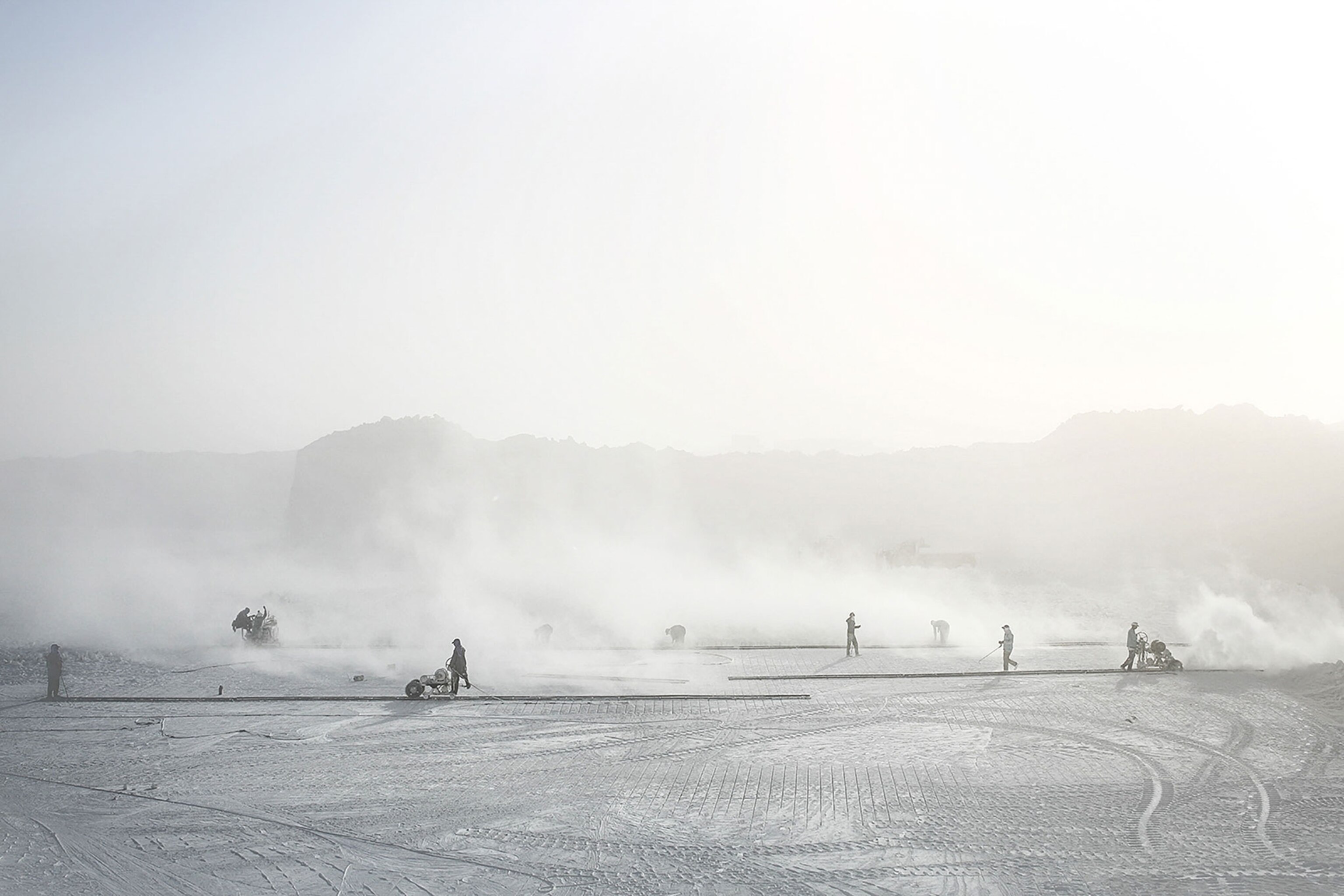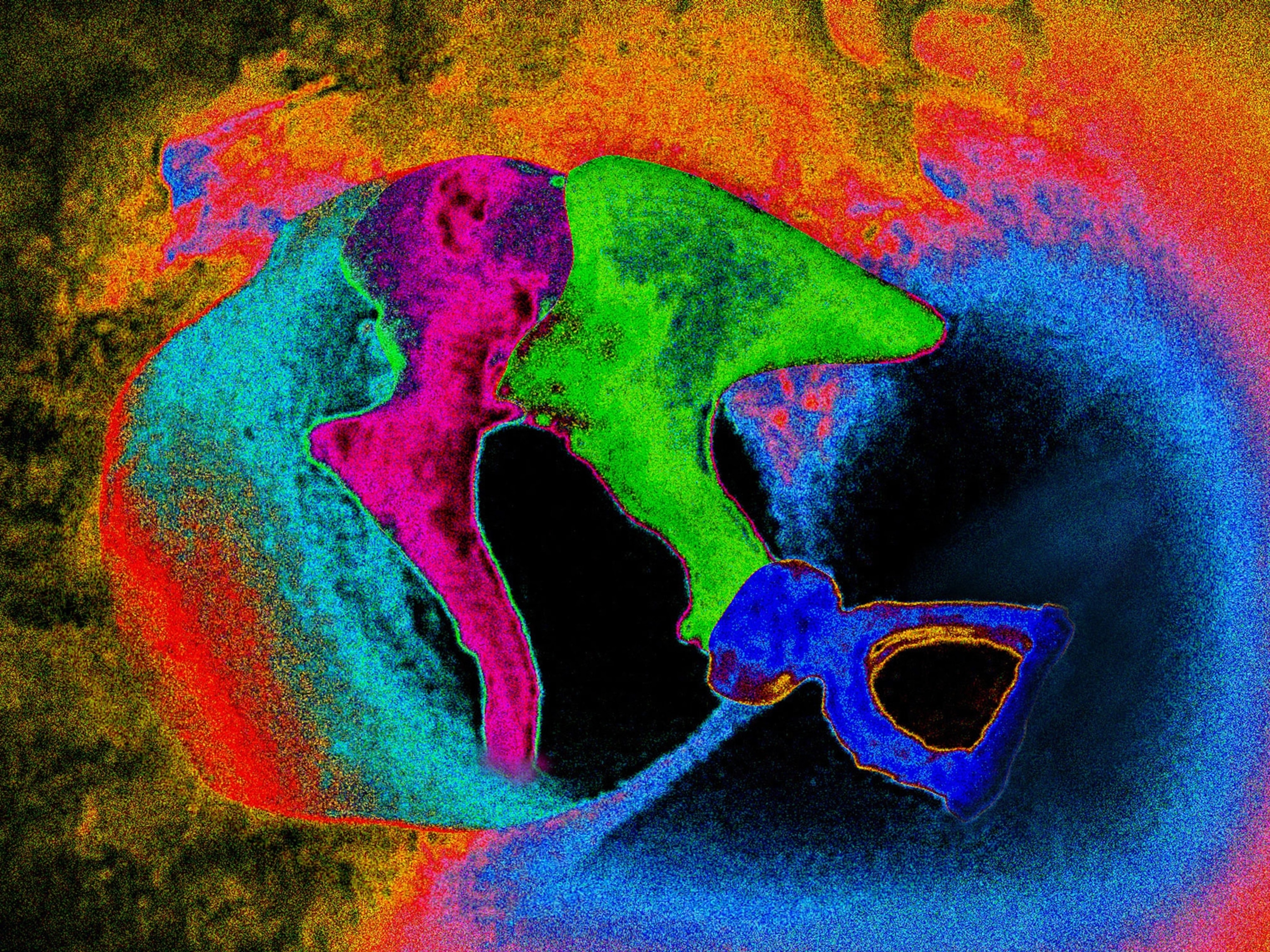
Egypt’s Limestone Quarries: Picturesque but Deadly
“It’s very hot, even in December. And it’s really hard to breathe when pillars of dust rise. Workers hit machines with hammers to make noise, warning other workers that the heavy, fast machinery is close by,” says photographer Mohamed Ali Eddin, describing a typical scene in a limestone quarry in Minya, Egypt. “No one can hear the others; they have to shout.”

Ali Eddin first visited the quarries in 2009 with a journalist who was working on a book. “I visited for only two days. I couldn’t take photos for more than half an hour before I had to give my eyes and my lungs a break,” he says. But the story of the workers, taking place in such a visually enticing environment, had him hooked. At the time he didn’t have the funding, the connections, or the experience to tell the difficult story of the quarry laborers, but he knew he had to return. And in 2014, he came back to Minya with the help of a grant from the Manuel Rivera-Ortiz Foundation for Documentary and Film.

In his four months photographing in the quarries, he says at least six people were killed. Ali Eddin, who lives about 150 miles away in Cairo, says that most people in the capital are completely unaware of this dangerous industry. “Nobody,” he says, “publishes any news in Cairo, or even in Minya, about what happens in quarries.”

Ali Eddin says the hazards of the job begin before the workers even arrive on site. Because the laborers ride down curvy roads in trucks that were not intended to carry people, often at high speeds, just getting to work is one of the largest risks. The powerful machines used to cut the hard limestone and high-voltage electricity cables are the other culprits most likely to cause injury.

The conditions are still as hazardous as they were after Ali Eddin’s initial visit in 2009, but he says many of the workers have become more aware of the dangers. “In 2009, I used to hear workers’ justifications after accidents in the quarries. They used to say, ‘It’s our destiny. It’s the will of God, and we have to accept it.’” But Ali Eddin says that when he returned in 2014 he heard a different tone. “They told me directly, especially the youth workers, that injuries or death are not the will of God. They said, ‘Our colleagues died because of unsafe machines,’ and they complained that quarry owners don’t want to spend money on improving the machines or making it safer.”

A man named Mary Mina stands out in Ali Eddin’s memory. “He helped me at the beginning to meet other workers and talk with them and visit the quarries. He was a member of the Quarry Worker Syndicate,” Ali Eddin says, explaining that the independent syndicate was the first in Egypt to be established after the 2011 revolution. In 2014 a truck accident took Mina’s life. He was killed along with two other quarry workers on their way to work.

Ali Eddin says that because many of the workers are not officially employed by the quarries, obtaining compensation for injury or death is tricky and depends on the owner. For example, if the quarry owner lives in the same town as the injured worker, compensation is more likely. But drafting an official complaint, Ali Eddin says, usually doesn’t bring workers compensation, even years later.


Ali Eddin says his goal is to raise awareness. “I hope the government and more NGOs interfere to change this. It takes time. It’s vital to change the unsafe machines, to give safety equipment to workers, and to stop sending children to quarries.”

In telling this sensitive story, Ali Eddin says it was important “not to be somebody who doesn’t know anything about them or someone coming from Cairo to report a very fast story and get back.” He developed trust with the men. “We talked on the phone all the time, even some of them had a Facebook account. I spent the night at the quarry, sleeping alongside them. Many warned me, ‘Don’t go to the quarry at night. It’s not safe.’ But it was very safe because I had all of them as my friends. We ate together, drank together, and took photos. The relationship was very good, and I couldn’t continue this story without it. They were very welcoming, and they thought I should be there and should be taking photos.”

Learn more about Mohamed Ali Eddin’s work on the Manuel Rivera-Ortiz Foundation website. See more of Ali Eddin’s work on his website and follow him on Instagram.
Related Topics
You May Also Like
Go Further
Animals
- How can we protect grizzlies from their biggest threat—trains?How can we protect grizzlies from their biggest threat—trains?
- This ‘saber-toothed’ salmon wasn’t quite what we thoughtThis ‘saber-toothed’ salmon wasn’t quite what we thought
- Why this rhino-zebra friendship makes perfect senseWhy this rhino-zebra friendship makes perfect sense
- When did bioluminescence evolve? It’s older than we thought.When did bioluminescence evolve? It’s older than we thought.
- Soy, skim … spider. Are any of these technically milk?Soy, skim … spider. Are any of these technically milk?
Environment
- Are the Great Lakes the key to solving America’s emissions conundrum?Are the Great Lakes the key to solving America’s emissions conundrum?
- The world’s historic sites face climate change. Can Petra lead the way?The world’s historic sites face climate change. Can Petra lead the way?
- This pristine piece of the Amazon shows nature’s resilienceThis pristine piece of the Amazon shows nature’s resilience
- Listen to 30 years of climate change transformed into haunting musicListen to 30 years of climate change transformed into haunting music
History & Culture
- Meet the original members of the tortured poets departmentMeet the original members of the tortured poets department
- Séances at the White House? Why these first ladies turned to the occultSéances at the White House? Why these first ladies turned to the occult
- Gambling is everywhere now. When is that a problem?Gambling is everywhere now. When is that a problem?
- Beauty is pain—at least it was in 17th-century SpainBeauty is pain—at least it was in 17th-century Spain
Science
- Here's how astronomers found one of the rarest phenomenons in spaceHere's how astronomers found one of the rarest phenomenons in space
- Not an extrovert or introvert? There’s a word for that.Not an extrovert or introvert? There’s a word for that.
- NASA has a plan to clean up space junk—but is going green enough?NASA has a plan to clean up space junk—but is going green enough?
- Soy, skim … spider. Are any of these technically milk?Soy, skim … spider. Are any of these technically milk?
Travel
- Could Mexico's Chepe Express be the ultimate slow rail adventure?Could Mexico's Chepe Express be the ultimate slow rail adventure?
- What it's like to hike the Camino del Mayab in MexicoWhat it's like to hike the Camino del Mayab in Mexico




